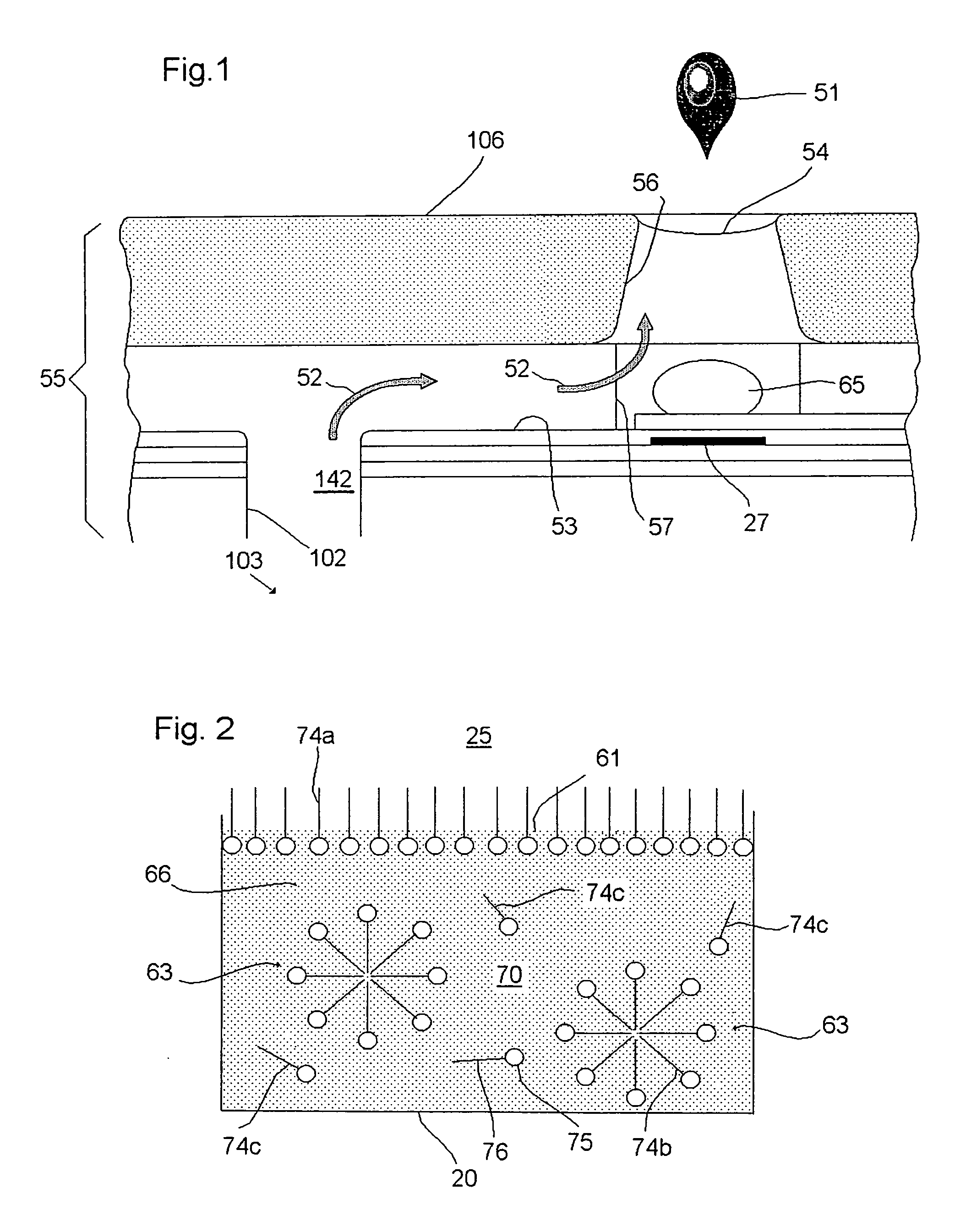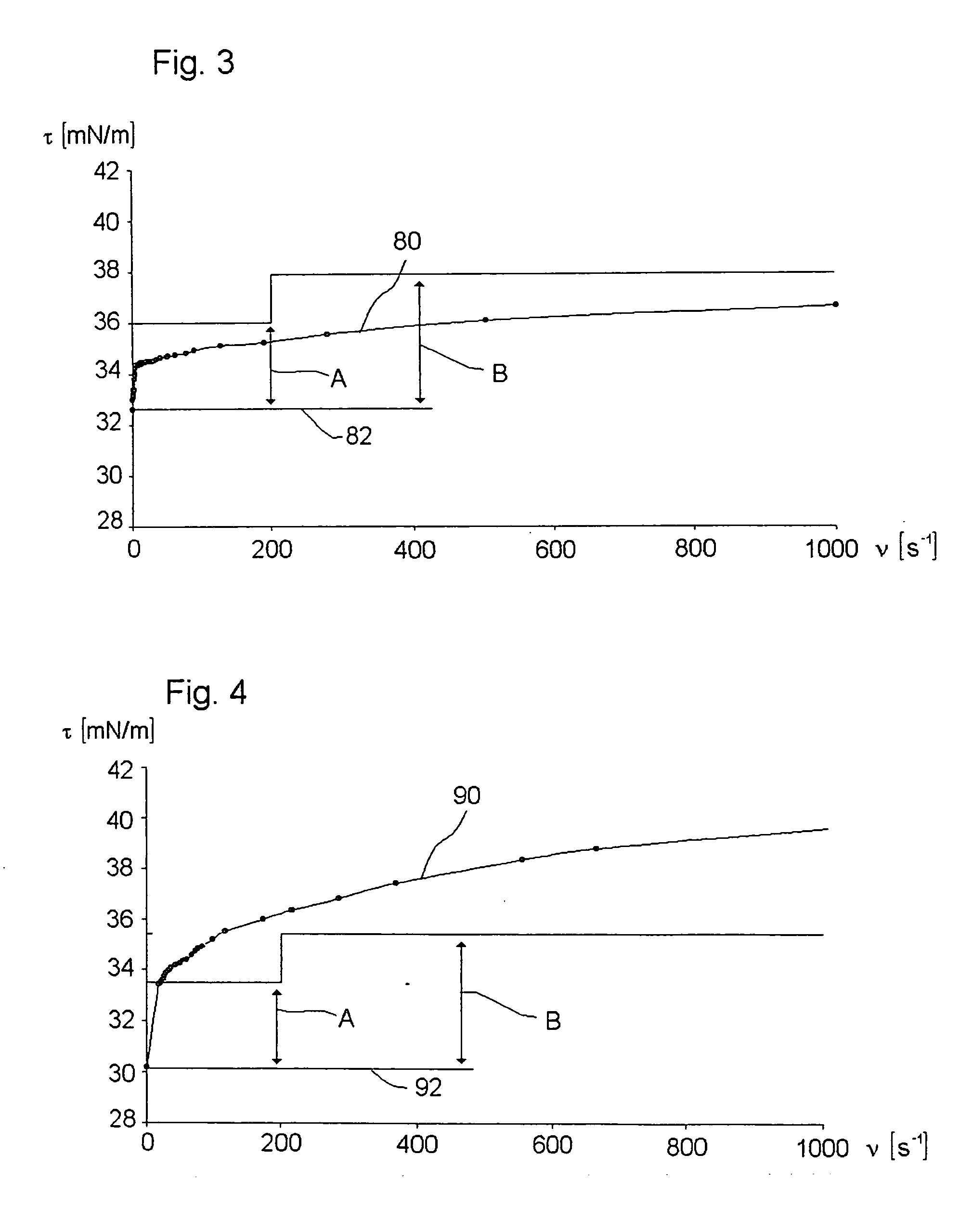Ink for thermal ink jet printing with high performance at high ejection frequencies
a technology of thermal ink jet printing and ink jet, which is applied in the direction of inks, instruments, measurement apparatus components, etc., can solve the problems of paper misalignment and non-reproducible trajectories, and achieve the effect of increasing the nozzle filling speed, increasing the printing speed, and maximizing the droplet ejection frequency
- Summary
- Abstract
- Description
- Claims
- Application Information
AI Technical Summary
Problems solved by technology
Method used
Image
Examples
second embodiment
[0134] A second ink according to this invention is made of the compounds listed above for the known ink, from which it differs solely in its surfactant system, the second ink having as its surfactant system an ethoxylated alcohol.
[0135] Preferably the ethoxylated alcohol used in the invention is a primary ethoxylated alcohol having a alkyl chain C11 and 7 ethoxy units, such as the commercial product called Lialet 111 / 7 (Condea), used in a percentage preferably between 0.1% and 3% by weight.
[0136] The table below compares the properties of the second ink with the known ink:
second inkknown inkpH7.77.7τstat (mN / m)29.932.5η (mPa * s)2.22.2DSTslow rearrangementfast rearrangement
[0137]FIG. 5 is graph 94 illustrating the pattern of the DST in relation to the droplet ejection frequency ν of the second ink, where the level 95 corresponds to the τstat value of the second ink.
[0138] The dynamic behaviour of the second ink according to this invention is also of the slow rearrangement type ...
third embodiment
[0142] A third ink according to this invention is made of the compounds listed above for the known ink, from which it differs solely in its surfactant system, the third ink having as its surfactant system an ethoxy-propoxylated alcohol, having preferably an alkyl chain C12 / 14 with 7 ethoxy units and 4.5 propoxy units, such as the commercial product called Softanol EP7045 (Ineos), used in a percentage preferably between 0.1% and 3% by weight.
[0143] The table below compares the properties of the third ink according to this invention with the known ink:
third inkknown inkPH7.77.7τstat (mN / m)31.432.5η (mPa * s)2.22.2DSTslow rearrangementfast rearrangement
[0144]FIG. 6 is a graph 97 illustrating the pattern of the DST in relation to the droplet ejection frequency ν of the third ink, where the level 98 corresponds to the τstat value of the third ink.
[0145] The dynamic behaviour of the third ink according to this invention is also of the slow rearrangement type because it does not satisf...
fourth embodiment
[0149] A fourth ink according to this invention is made of the compounds listed above for the known ink, from which it differs solely in its surfactant system, the fourth ink having as its surfactant system a fluorinated surfactant. Fluorinated surfactants, by way of their great capacity for reducing static surface tension even in low concentrations, are known as “superwetters” to those skilled in the art.
[0150] Preferably the fluorinated surfactant is a fluornated alkyl ester such as Fluorad FC-430 (3M) used in a percentage preferably between 0.1% and 1% by weight.
[0151] The table below compares the properties of the fourth ink according to this invention with the known ink:
fourth inkknown inkpH7.77.7τstat (mN / m)2432.5η (mPa * s)2.12.2DSTslow rearrangementfast rearrangement
[0152]FIG. 7 is a graph 100 illustrating the pattern of DST in relation to the droplet ejection frequency ν of the fourth ink, where the level 101 corresponds to the τstat value of the fourth ink.
[0153] The ...
PUM
| Property | Measurement | Unit |
|---|---|---|
| static surface tension | aaaaa | aaaaa |
| surface tension | aaaaa | aaaaa |
| surface tension | aaaaa | aaaaa |
Abstract
Description
Claims
Application Information
 Login to View More
Login to View More - R&D
- Intellectual Property
- Life Sciences
- Materials
- Tech Scout
- Unparalleled Data Quality
- Higher Quality Content
- 60% Fewer Hallucinations
Browse by: Latest US Patents, China's latest patents, Technical Efficacy Thesaurus, Application Domain, Technology Topic, Popular Technical Reports.
© 2025 PatSnap. All rights reserved.Legal|Privacy policy|Modern Slavery Act Transparency Statement|Sitemap|About US| Contact US: help@patsnap.com



